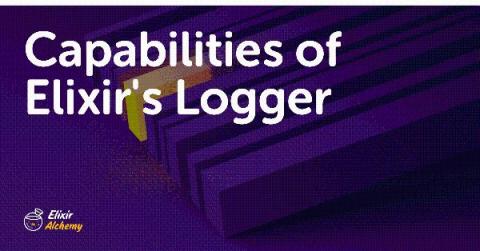Capabilities of Elixir's Logger
Logs are an important part of your application and logging shouldn’t be one of the last things you think of. You should configure your log system, formatter, and style as soon as you start the development of your app. Also, do your best to document the process and share how it works with the rest of your team. In this article, we’re going to demonstrate how logs work in Elixir. We’ll jump into Elixir’s Logger module, which brings a lot of power to logging features.











